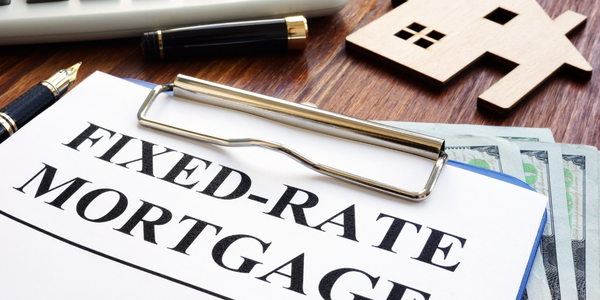With definite monthly instalments, a fixed rate bank loan is one of the traditional and most popular choice preferred by most consumers. While some may view fixed rate loan packages to be the more expensive option, Andrew Adriaan believes if taken at the correct timing in the interest rate cycle, it can offer a hedge, security and assurance for clients. Best known for his expertise in managing mortgage portfolios, Andrew is an associate director and a renowned pioneer with over 12 years in the industry. In this article, Andrew sheds light on the pros and cons of bank loans with fixed interest rates. Here’s how you can make the best out of such loan structures.

How Are Fixed Rate Bank Loans Being Structured?
Fixed rate bank loans offer interest rates that are ‘locked’ and will not change despite changing conditions in the interest rate market. In Singapore, fixed rate loans are only offered for a stipulated period of time. The fixed rate applies usually between 1 to 5 years and not throughout the tenor of the loan. After which, banks will offer floating rates for the remaining tenor.
The lock-in period is usually correlated with the fixed rate period but, it is not always the case. The lock-in period refers to the minimum period that borrowers have to service the home loan with the bank. Banks would usually offer 2 or 3 years fixed rate corresponding to the lock in period. However, there are also banks that offer differently. Where the lock in period does not match the number of years offering fixed rates. For example, some banks offer fixed rate for first 2 years but there is a lock in period of 3 years.
There are also banks which offer the same number of years for the fixed rate and lock in period, but you are unable to refinance immediately. For example, bank offers fixed rate for first year together with lock in period of 1 year, but you will only be able to refinance after 24 months.
Why Should You Take Up Fixed Rate Bank Loan?
1. Assurance and stability
You can choose to take up fixed rate bank loan as it provides assurance that the bank will not change the interest rate during a stipulate period of time. The home loan is an important aspect in a client’s financial portfolio. If you choose a fixed rate bank loan, you will have a peace of mind knowing the exact amount of instalment due. If you are risk-averse and have low tolerance for fluctuations arising from floating rate bank loans, fixed rate bank loan will be more suitable for you.

2. Hedge against rising interest rates
In the same vein, this is a known and popular way to hedge against a rising interest rate environment.
For example, if you decide to borrow $500,000 for 15 years. You are presented with 2 options – fixed rates at 2.75% or floating rates at 2.00%.
If you choose to take fixed rates, the instalment will be at $3,393 per month/ The projected instalment for floating rates is at $3,217 per month. With this floating rate, it will give you a projected savings of $2,112 per year.
However, should the interest rate increase by 1.00%, the eventual instalment for floating rate will increase to $3,452 per month. The savings may be reduced significantly or you may suffer a loss depending on how fast the interest rate climb.
With fixed rate bank loans, it protects home owners who may not have financial flexibility for fluctuations. This varying increment in interest rate is caused by the rise in uncertainty due to inflationary measures and unstable global politics. It is also anticipated that there will be a more aggressive increase in interest rate markets. This suggests that interest rates may surge even higher than before.
3. Calculated move and structured planning
With the certainty that comes with a fixed rate bank loan, it aids you in terms of financial planning. Such calculated move gives you a sense of security knowing that your loan instalment is fixed for a stipulated amount of time. You can plan ahead and strategize on your next move for your financials knowing what lies ahead.
When Do You Avoid Fixed Rates?
On the flip side, taking on fixed rate bank loans also has its downsides.
1. Interest Rate Market Downturns
In a declining interest rate market, you are encouraged to take on floating rates to capture the opportunity to ride on the declining reference rate like SIBOR/ SORA. If you took on a fixed rate during this time, you would have missed having a lower interest rate during the fixed rate/lock in period.

2. Fixed Rates are typically priced higher
Fixed rates are typically priced higher than floating rates. The banks’ cost of fund on a ‘fixed’ rate are priced more as compared to floating rate. For fixed rates, the bank would hedge against the risk of the interest rate fluctuation. Whereas for floating rates, the client will bear the risk of market fluctuation and the bank earns based on the margin. Hence, it will be priced into the interest rates which means you will essentially be paying a premium for having assurance of a fixed interest rate.
Some Features Of Fixed Rate Bank Loan Packages
1. Waiver on penalty due to sale
If you are considering selling your property within the lock in period, you may be caught in a situation. You will be subjected to a penalty of typically 1.50% and more. If you had a professional mortgage advisor who understands your strategy on your property portfolio, you will not be caught in this sticky situation. The recommended fixed rate bank loan will have a clause to allow a full waiver of penalty for a full redemption due to the sale of your property. This way, you can enjoy secured interest rates and knowing that you will not be charged a hefty penalty.
2. Free conversion within fixed rate period
It is common for loan packages to offer free conversion after lock in period. However, it is seldom to find loan packages to offer free conversion within the lock in period. Nevertheless, there are times where such packages are made available which allow free conversion during the lock in period. Having the free conversion within the lock in period allows the client to have the opportunity to switch to another package should they find an alternative package that is lower than their existing package without incurring any penalty to switch. This way the client can sign on the fixed rate package knowing they can exit the plan even within the lock in period.
3. Hybrid packages
Some banks are able to offer homeowners with the option to take both fixed rates and floating rates at the same time. This package(s) allows you flexibility if you are not certain on where the direction on the interest rate is going. You can choose to segregate your housing loan to your desired ratio of the loans between fixed rate and floating rate. Deciding to take both come with its pros and cons. Hence, it is always best to speak with a professional mortgage advisor on the best way forward.
Want to find the best mortgage rate in town? Check out our free comparison service to learn more!
Read more of our posts below!

